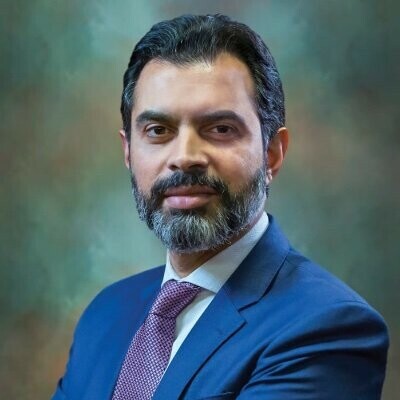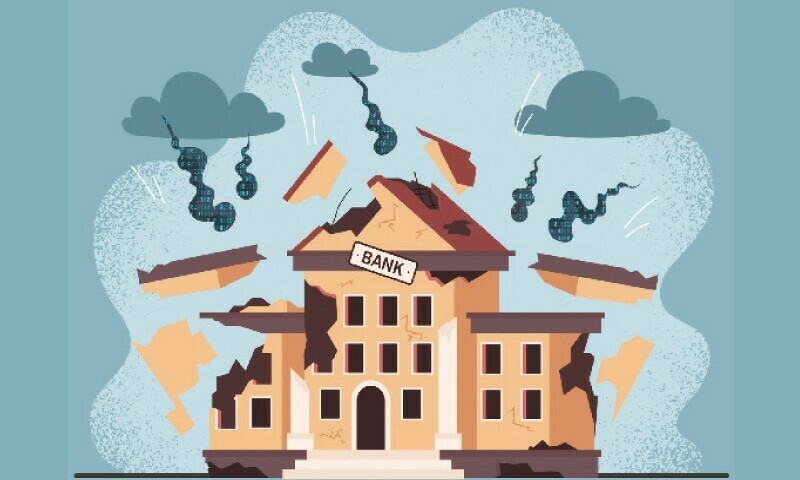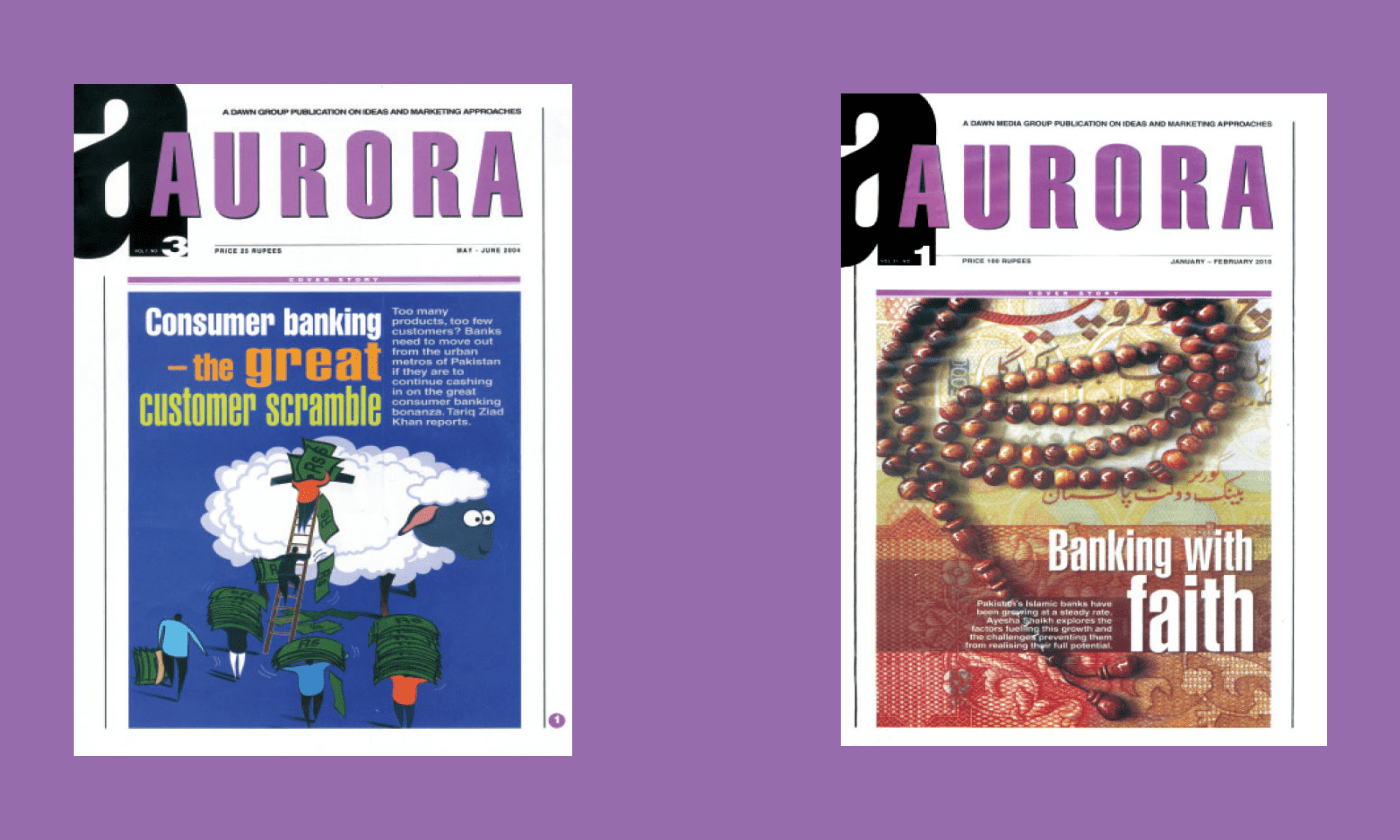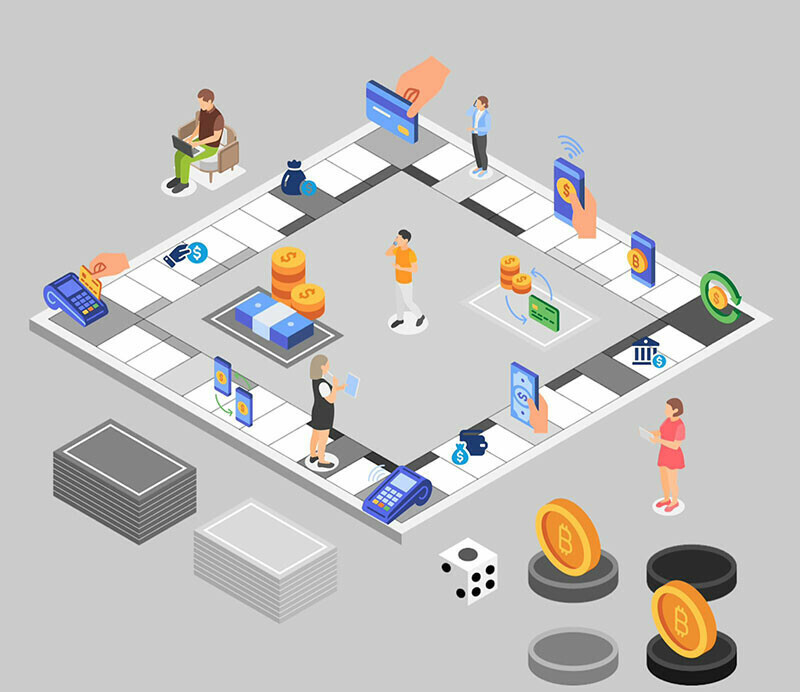Banking and Financial Services
Since 1998, Aurora has been covering the banking sector in detail, chartering the financial sector’s trajectory from the nineties onwards. The nineties were the decade that saw the rise of consumerism in Pakistan; banks started to focus on consumers heralding the advent of what we now refer to as consumer financing.
Pakistan’s first credit card was introduced by CitiBank in 1994, followed by the introduction of new financing options such as car loans. Then, in 1998, following the nuclear tests carried out by the second Nawaz Sharif-led government, foreign currency accounts were frozen in Pakistan, wiping out the deposit base of many banks and causing them to amplify their efforts to draw in local consumers.
As the 2000s unfolded, the consumer was undoubtedly king, with banks scrambling to attract depositors. Taking the lead were the multinational banks, followed by the recently privatised banks – all increasing the scope of their services by introducing features such as ATMs to ease the customer journey and focusing on relationship management. By 2005, consumer banking was the second fastest growing sector in Pakistan after the telecom companies in terms of ad spend. Consumer financing was further buoyed by measures taken by the State Bank of Pakistan (SBP) to promote consumer banking, an improving economy and higher levels of purchasing power. Banks responded by increasing their consumer product offerings and adopting a more marketing-oriented approach to cater to an increasingly aware market.
Faced with competition from the multinational banks, local banks began to offer alternative delivery channels such as internet and mobile banking powered by rising telecom penetration. The SBP upped the ante and introduced the first Branchless Banking Regulations in 2008, allowing banks to partner with telecom companies and for telecom companies to purchase banks – all in a bid to jumpstart branchless banking services (prior to this branchless banking could only be undertaken by financial institutions). In this respect, it has to be said that the SBP has played a major and positive role in encouraging the digitisation of banking services; one of its most notable achievements being the launch of Raast in January 2021 to facilitate digital payments.
In 2006, Telenor Easypaisa was established, followed by Mobilink’s Mobicash and Zong’s Timepey. Their inception was triggered largely by the fact that only 12 to 16% of Pakistan’s population was ‘banked’, and the limited number of branches in the country (approximately 10,000 in urban and semi-urban areas). This signaled the beginning of what we now call fintechs. Fintechs would become a major gamechanger by making financial services like payments, insurance, e-commerce, lending, and e-wallets available to a wider segment of the population 24/7. In November 2022, the Government of Pakistan announced the intention to convert the banking ecosystem to a completely Islamic one by 2027, a deadline that remains ambitious given the challenges posed, particularly the development of Islamic products and services.
However, the biggest change underway is the disruption posed by technology – more specifically, Banking 4.0 – a term which refers to the next generation of banking driven by smartphones, AI and instant payments. Digital banks are a key component of Banking 4.0, and in January 2023, the SBP provided NOCs to five applicants to establish digital banks: Easypaisa, Hugo Bank, KT Bank, Mashreq Bank, and Raqami; and in 2025, Easypaisa was awarded a license to operate. Digital banks are expected to be a game-changer as far as financial inclusion and the customer journey is concerned, and is poised to change the face of the banking sector.
From Aurora’s archives
INTERVIEW
 Dr Reza Baqir, Governor, State Bank of Pakistan
Dr Reza Baqir, Governor, State Bank of Pakistan
PROFILE
 Grit, Purpose and Authenticity: Rifah Qadri, Head of Marketing and Communication, Easypaisa.
Grit, Purpose and Authenticity: Rifah Qadri, Head of Marketing and Communication, Easypaisa.
ARTICLES
 Disruption and Banking 4.0 – Nabeel Qadeer
Disruption and Banking 4.0 – Nabeel Qadeer



Comments (0) Closed